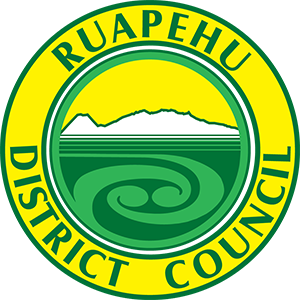Leading locally
Variable
The Council is moving toward its objectives at present because of the commitment of the Mayor and the strong relationship with a highly experienced Chief Executive. The Council is strengthening its governance particularly with a recently established Finance, Audit and Risk Committee and an accompanying risk management framework.
The Council presently operates effectively because of the commitment of the Mayor and his strong relationship with an experienced Chief Executive. The Council has strengthened its governance, with a risk management framework. Management of health and safety risk has also been given a high priority.
The recent town revitalisation programme has brought the Council and the various localities it operates together around a common goal of making the area more attractive to live in and more attractive to tourists. The Chief Executive attributes some of the success of this project to its district-wide approach: no one is left out. There are some risks in this revitalisation strategy, particularly as the factors involved in internal migration (eg how
well Australia’s mining economy is performing, whether Auckland house prices continue to increase, and whether Chinese tourists will continue to arrive) are largely outside the control of any council. The vision behind it has, however, brought staff and the community together, and this is reflected in the greater positivity reported by the assessment’s interviewees.
There are residual issues to deal with in the Council culture, particularly in relation to its openness about issues.
Investing money well
Areas for improvement
The Council demonstrates prudent cost management, but it needs to substantially improve its financial processes and the quality of its financial analysis and reporting.
The Council’s financial strategy has been based on achieving a sustainable balance between rates affordability and the provision of services at a level that meets the community’s expectations.
Expenditure on infrastructure has gradually been increased, over a number of years, to ensure the current infrastructure network is maintained. This now appears to be in balance, provided that the Long Term Plan’s assumptions hold. There are three areas where those assumptions are worth a closer look. The first is the ability of ratepayers to continue to afford rates increases. The rates increase for this year was 2.96 per cent, but the average income in at least one of the towns is only $21,000. The second is the roading network’s ability to withstand additional costs from increased heavy traffic and, specifically, from logging trucks. The third is the risk that the assumption of a static population turns out to be incorrect.
The Council is highly conscious that the standard of previous years’ financial accounting needed to improve, and it has improved to the point where councillors, and the auditors, have trust that the numbers reflected in the accounts are correct. However, reporting is still being developed and is rudimentary. Furthermore, capital expenditure on the three waters was planned for, but then not committed. The Council would benefit from better management of committed and uncommitted capital expenditure.
Delivering what’s important
Better than competent
The Council demonstrates a generally sound level of competence in managing the district’s assets and services, particularly its key infrastructure assets. The Council also works in a collaborative and effective manner with other local authorities and stakeholders in the region.
The Council is a small organisation that provides a large number of services to a diverse community across a wide geographical spread.
It has responded to this challenge by combining its own resources and skills with those of other local authorities in the region, which are made available through the Local Authority Shared Services, and by using external service providers.
The Council has low staff turnover, which has contributed to the development of a team with a generally good understanding of both the expectations of the community and the services which the Council provides.
Listening and responding
Performing well
Councillors and staff alike have set high standards for being accessible to, and visible within, their community. There is particular emphasis on direct engagement with the community through local meetings and events, and on having the community help set the agenda for issues under consultation.
Ruapehu is a demographically and ethnically diverse community. Its youth, elderly and Māori populations are higher than the national average, and it has high numbers of unemployed and non-resident homeowners.
The Council has developed a very extensive and direct form of engagement with all its community groups, as well as a communication strategy that reflects the community’s diversity. Facing significant issues regarding its levels of service and their financial sustainability, the Council has adopted an approach of having the community drive the agenda for the services to be prioritised.


